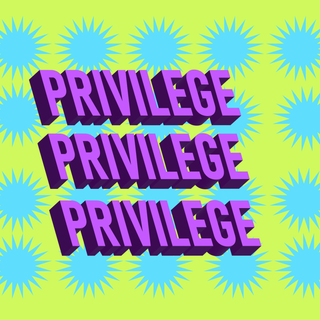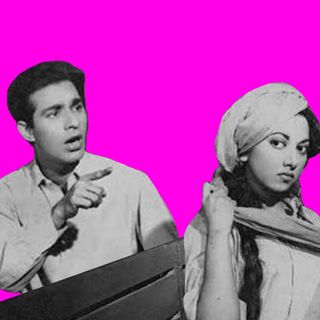
The Rise of the ‘Sober‑Curious Movement,’ Explained
The sober-curious movement is driven by factors ranging from health consciousness to, evolving attitudes towards drinking culture,

Before the pandemic, I’d meet people who didn’t drink either because it didn’t agree with their ethical beliefs and religious upbringing, or, occasionally, due to bad experiences with alcohol. Rarely, if ever, did I cross paths with individuals who practiced abstinence, not because it clashed with their principles, but because they preferred the state of sobriety over that of being drunk. But post-2020, I have met a number of people who have opted for sobriety by choice, sans previous negative experiences with drinking.
This is a manifestation of the sober-curious movement, which encourages individuals to question their relationship with alcohol and consider the benefits of sobriety. It’s driven by a myriad of factors from health consciousness, to evolving attitudes towards the drinking culture that dominates social scenes, to aspiring for more authentic, less alcohol-influenced connections with people.
Interestingly, though, the sober-curious movement doesn’t preach absolute abstinence — that, perhaps, is its strongest appeal. “The sober-curious culture breaks the binary stigma of either you drink, or you do not drink at all,” says Maeve O’Neill, a behavioral health expert. “To pursue a sober-curious lifestyle empowers one to make choices that fit what is best for you during any period of your life or under circumstances and means of your choosing.”
In other words, the sober-curious movement weaves the notion of mindfulness into the culture of boozing. “As mindfulness, in general, has become more and more popular, being sober-curious feels like a natural extension of healthier lifestyle options like plant-based diets, yoga, and meditation,” says Molly Watts, who has battled a drinking problem in the past, and calls herself an “alcohol minimalist” now.
The popularity of the movement has also been fueled by social media — with communities like “Retired Party Girl” and “No Booze Babes” springing up, and hashtags like #mindfuldrinking and #sobercurious gaining traction on Instagram and TikTok. As influencers experiment with sobriety, their followers are encouraged to, well, follow. This has fostered a sense of community around the sober-curious movement — granting it a bigger audience, and in turn, a bigger pool of potential subscribers to the lifestyle. In recent years, the growth of the non-alcoholic beverage industry, too, has made the movement more sustainable by offering a number of non-alcoholic drinks beyond the regular cola and fizzy orange varieties.
Ruby Warrington — an author and journalist, who authored the book Sober Curious: The Blissful Sleep, Greater Focus, Limitless Presence, and Deep Connection Awaiting Us All on the Other Side of Alcohol in 2018 — is often credited with founding the movement. The book endorses the movement on the grounds that reducing alcohol consumption can enable people to sleep better, experience greater mental clarity, and forge deeper social connections. But many argue that while Warrington contributed to the movement by christening it as “sober-curious,” the movement itself had evolved in 2012 when the “Dry January” initiative that encouraged a healthy detox in the first month of the year — following a period of (over)indulgence during the holiday season — began gaining momentum.
Related on The Swaddle:
Having a Beer a Day May Be Good for Our Gut Health, Finds a Small Study
In the past, the idea of sobriety was either associated largely with addiction, or eclipsed by abstinence, which carried religious undertones. But in recent years — and especially in the aftermath of the global health crisis of 2020 — the movement has picked up even further. Increased health consciousness among people in the post-pandemic world has further boosted the popularity of the lifestyle. In 2020, 12% of people reported being sober-curious; in 2022, the share rose to 19%. Besides health consciousness, the lockdown-indued closure of bars and clubs to enforce social distancing, too, compelled many social drinkers to go without alcohol for months — sometimes, for the first time ever since they began drinking.
“What changed during the pandemic was how often and how heavily people are consuming alcohol,” wrote Megan Cook and Gabriel Caluzzi, both from the Centre for Alcohol Policy Research at La Trobe University in Australia. “[T]he greatest reduction in alcohol use seemed to be in younger people, who usually consume more alcohol out of the home. For young people, alcohol use is still a very social practice, so when young people couldn’t socialize, they were less likely to consume alcohol.” In a sense, the peer pressure to drink was suddenly out of the picture.
To add to that, Gen-Z has also proven to be relatively more immune to the drinking culture that tends to peg itself as the best way to form honest, no-holds-barred friendships and take the edge off the trials and tribulations of life. Whether it was the pandemic-ushered deprivation, then, or simply Gen-Z’s propensity to question belief systems before subscribing to them, isn’t clear — but, at present, the generation drinks 20% less alcohol per capita than millennials did at the same age, reports suggest.
The sneak peek into the life of sobriety that the lockdown afforded people across generations, prompted many to re-evaluate their relationship with alcohol. “[The] lockdown was a period of self-reflection, which gave people time to think about their own alcohol use. While some people may have used alcohol as a way to manage stress and the uncertainty of lockdown, it seemed many others saw lockdown as an opportunity to reduce their alcohol consumption and work towards a better relationship with alcohol… [But even] people [who] seemed to drink alcohol more often during lockdowns… were consuming less alcohol when they were drinking,” Cook and Caluzzi noted.
The hands of those with limited stocks of alcohol at home were also forced to exercise greater control over their drinking habits, inspiring them to try it out even when the lockdown lifted, and they had the opportunity to replenish their dwindling stocks.
Related on The Swaddle:
The Popularity of ‘Emotional Eating’ Begs the Question: Why Do People Use Food to Cope With Stress?
“Re-examining one’s alcohol consumption provides an opportunity to explore [their] relationship to why we drink, how [they] feel when [they] drink, and what happens when [they] cut down or stop entirely,” explains O’Neill. “The mental health or wellbeing benefits [of not drinking] allow us time for self-reflection as to why we might feel pressure to drink in social or workplace settings and to discover with confidence that alcohol as a social prop or stress reducer is not necessary. If we drink to reduce stress, we may be encouraged to develop alternative natural methods… that achieve similar coping results.”
A testament to the popularity of the movement is the damage it has wreaked on Japan’s economy — leaving policymakers wondering whether they should encourage people to drink.
However, the sober-curious movement, too, has garnered its share of criticism — with people deeming it elite and exclusionary. The censure is centered on the movement making light — possibly inadvertently — of the complex process of recovery and ignoring the financial resources, social capital, and emotional fortitude that enable people with drinking problems to maintain their sobriety. “Co-opting the pretty parts of sobriety completely strips it of all meaning,” Holly Glenn Whitaker, founder of an online sobriety school, told Refinery29. Not only that, but the movement has also been denounced for overlooking the broader social and economic factors that contribute to alcohol abuse and addiction — packaging it as an accessible wellness trend anyone with a modicum of discipline should be able to participate in.
As the movement continues to evolve and grow — hopefully, in a manner that allows it to remain mindful of the socio-economic factors contributing to alcohol abuse — it is likely to have an even greater influence on our sociocultural norms. Meanwhile, for individuals looking to buy into it, O’Neill’s words on the very essence of the movement, come to mind, “By participating in a sober-curious lifestyle, we make conscious decisions of what we choose to put into our bodies, our personal limits, and under what circumstances we may choose to moderate or abstain from drinking.”
Devrupa Rakshit is an Associate Editor at The Swaddle. She is a lawyer by education, a poet by accident, a painter by shaukh, and autistic by birth. You can find her on Instagram @devruparakshit.
Related


Words Mean Things: Privilege
